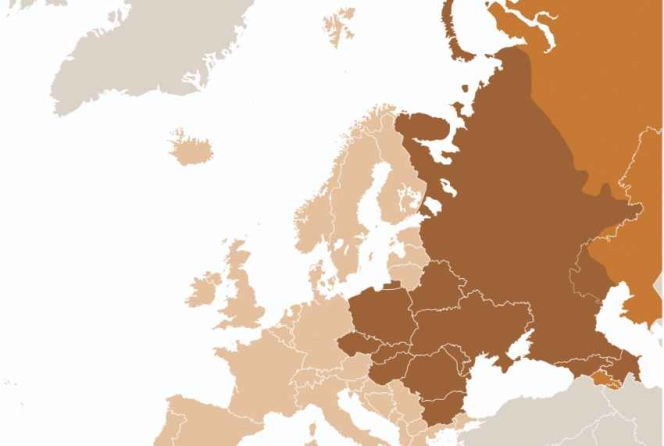

Every five years is the main path of crisis in the tyre industry and it begins to change the following year, the third year in a row, in which the stage of another bottleneck is initiated! These trends prevailed during the periods 2013, 2008 and 2003. Global risks accelerated in 2018 as the United States and China fought harder for trade and the uncertainty surrounding Brexit reduced car sales in Europe, UK, India, China and parts of South America. The effects of the pandemic later hit the world during an ongoing crisis. All of them have led a multidimensional recession that will lower tyre sales. Few of the older Goodyear and Bridgestone factories closed during the last crisis years in 2013 and 2018. However, production facilities in Eastern Europe were very functional during those years.
In fact, every change in the global economy affects related industries, suppliers and third parties in chain reactions. What is the real spark that makes Eastern Europe the center of attention? Is it globalisation or tariffs and labeling that were introduced to prevent Far East companies attacking the European market? Both have shown effects in recent years. Game changes accelerated after the Trump administration. Many industries in China, including tyre manufacturers, have suffered the effects of trade struggles.
Tariffs and labeling that were introduced to prevent Far East companies attacking the European market are so far effective after years.
At the end of 2017, there were around 600 tyre factories in China. After a year, only 450 of them survived. Many more are expected to close by the end of 2020. Only 200 of them are expected to remain under a dozen parent brands, which means China's tyre factories are at the forefront of the competition in terms of price and quality. What if manufacturers of economical tyres in Eastern Europe did not exist today? The demand supply chain would potentially work for Chinese brands. The active period of closed factories would be postponed by a few years. But one day they might fail in the competition.
The European tyre production threatened by the destocking of distributors in 2012 and the big fives remain in a situation of closure of old and less profitable factories in 2013.
When we come to the 2010s, the nature of the tyre market in Eastern Europe began to differentiate from mainstream Europe. In year 2012, when the market size was around 300 million, 10% fewer tyres were sold in Europe compared to 2011. In contrast, the market share of cheaper import tyres reached 25 percent in those years. However, the tyre market in Poland and the Czech Republic grew, which was on the opposite side. The European tyre production threatened by the destocking of distributors, and the big fives remain in a situation of closure of old and less profitable factories in 2013. At the same time, high-efficiency factories in Romania, Hungary and Turkey had started to operate to produce cheap and high-value tyres.
Since the beginning of 2000, Eastern Europe has become attractive for foreign investment with the development of infrastructure and decisive administrative and legislative changes
Why is Eastern Europe becoming a hub for the tyre industry? The answer behind must be referenced both within mainland and eastern Europe and the global tyre market… We must respect the goodwill of Eastern European countries for national prosperity. Since the beginning of 2000, Eastern Europe has become attractive for foreign investment with the development of infrastructure and decisive administrative and legislative changes. They have become more transparent for large capitals.

Eastern Europe Annual sales of passengers and light vehicles cover 20% of the European market having a healthy growth of around 5% over the past 10 years. Eastern Europe has more construction activity related to the consumption of commercial tyres. Michelin and Bridgestone started early in Hungary. Nexen in Check Republic and Chinese tyre factory Linlong in Serbia started operations in 2019 and 2020. South Korean Hankook has opened a new factory in Check Republic. The positive development trend will continue in Eastern Europe.
The tyre market in Eastern Europe will potentially remain the hub of the European tyre industry, despite the various negative market effects.
The year 2020 has started with the pandemic effect. The rapid decline in demand for tyres reached 40% in various markets, as well as a 50% drop in new car registrations. Total sales are expected to remain under pressure until mid-2022. In the worst case, the industry will be restructured and the saturation time will cost more. For low efficiency systems, however, the life will not be easy. We can hear plant closures and startups from different countries. Among all these developments, the favorable environment existing in the tyre factories of Eastern Europe will remain the same.
On the other hand, the demand for cost-driven tyres from auto manufacturers will create an atmosphere for low-cost OEM brand manufacturers. New car registration will remain in higher figures in Eastern Europe compared to major European countries. All these effects give the tyre market in Eastern Europe a head start. Therefore, the tyre market in Eastern Europe will potentially remain the hub of the European tyre industry.
EU legislatives will be more deterministic for their further determination of direct foreign investments in Eastern Europe.
The European automotive tyre market generates sales of around $ 20 billion and is expected to grow at a CAGR of 4.5% during the 2019-2024 period before the pandemic. The expansion of the automotive industry so far is a major determinant of the European automotive tyre market which has worked well for Eastern Europe to be a developing region. One country after another has joined the EU in recent years. In addition, their growing expenditure per capita supports the high standard of living of consumers. Each entry shows us that they are more ready for further industrialization, including the tyre industry, and the decline of the tyre market remains limited in Eastern Europe.
Tyre manufacturers such as Trelleborg, Mitas and Apollo-Vredestein, which are already based in Eastern Europe and have facilities, have the potential to catch up with marketing and manufacturing volume opportunities in segments where the Big 5 has been in the past or does not want to participate directly. The impact of Chinese and Korean manufacturers on the tyre industry in Eastern Europe will continue for investments. However, EU legislatives will be more deterministic for their further existence.
- Bridgestone India
- Bridgestone Mobility Social Impact Awards 2025
- Jeya Padmanaban
- Safety Research Foundation
- Hiroshi Yoshizane
Bridgestone Honours Social Impact Innovators At 5th Edition Of Mobility Social Impact Awards 2025
- By TT News
- October 16, 2025
Bridgestone India announced the winners of the 5th Edition of its Mobility Social Impact Awards (MSIA) 2025 in Pune, celebrating organisations that use mobility for social good.
The top honour in the Road Safety Innovation and Excellence category went to ALERT (Amenity Lifeline Emergency Response Team) from Chennai for empowering over 450,000 citizens with emergency response skills. Safety Research Foundation (SRF), based in Pune, received a Jury Commendation for its BRACE Project, which transforms school zones with safety audits and infrastructure upgrades.
In the Empowerment of Vulnerable Communities category, The Association of People with Disability (APD), Bengaluru, won the top honour for its Rehab on Wheels initiative, which provides last-mile rehabilitation services.
The winners were presented with their awards by social worker Dr. Girish Kulkarni, founder of Snehalaya.
Hiroshi Yoshizane, Group President, Bridgestone Asia Pacific and Managing Director, Bridgestone India, said: “It is a privilege to honour these changemakers who are redefining mobility for social good. Their work reflects our shared commitment to building inclusive, safe, and empowered communities.”
Jeya Padmanaban, Founding Trustee, Safety Research Foundation (SRF), said, “We are truly honoured to receive the Jury Commendation at the Bridgestone Mobility Social Impact Awards 2025. The BRACE Project reflects our belief that road safety must begin at the community level, where awareness and infrastructure meet action. This recognition strengthens our resolve to continue building safer environments for children and fostering a culture of responsibility and care on our roads.”
| Category | Winner / Commendation | Organisation (Location) | Initiative Focus |
| Road Safety Innovation and Excellence | Winner | ALERT (Chennai) | Empowering citizens with emergency response skills |
| 1st Runner-up | SAFE India (Bhubaneshwar) | Improving safety through #ZoneZero Safe School Zone and Driver Training programs | |
| Jury Commendation | Safety Research Foundation (SRF) (Pune) | Transforming school zones via the BRACE Project | |
| Empowerment of Vulnerable Communities | Winner | The Association of People with Disability (APD) (Bengaluru) | Providing last-mile rehabilitation services via Rehab on Wheels |
| 1st Runner-up | Impact Guru Foundation (IGF-India) (Delhi) | Initiatives like Empower Her and Mission I-M-Possible, focusing on healthcare, education, and skilling | |
| Jury Commendation | Jharkhand Vikas Parishad (JVP) (Jharkhand) | Community-led programs promoting sustainable livelihoods and women’s empowerment |
Alessio Iacovelli Named Deputy Director Replacement Sales West Europe At Linglong Tire
- By TT News
- October 10, 2025
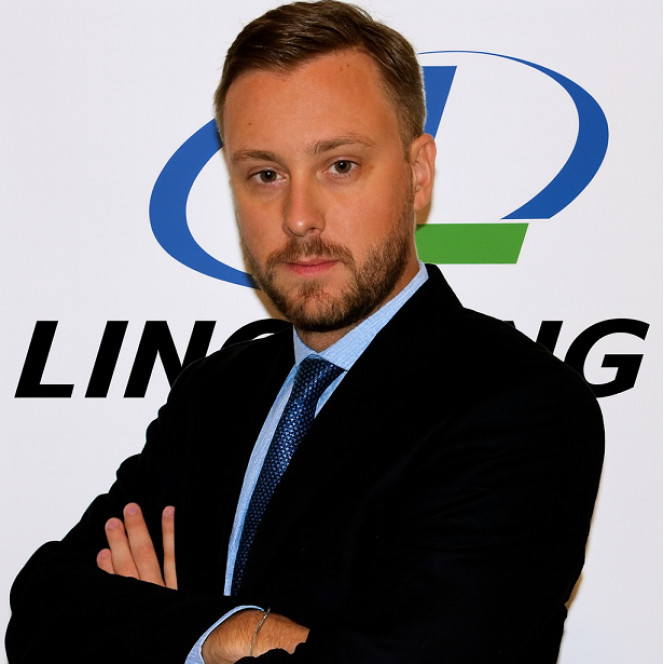
Linglong Tire has announced the promotion of Alessio Iacovelli to Deputy Director of Replacement Sales for Western Europe, effective 1 September 2025. In this elevated role, Iacovelli will take on leadership of the regional sales team with a mandate to accelerate business development. His key objectives will include forging strategic alliances and implementing programmes to strengthen customer loyalty. Iacovelli will report directly to Lisa Zhao, the Director of Replacement Sales for Western Europe, and will collaborate with her to manage key markets, including Germany, the UK, Italy and Spain.
Iacovelli, who began his career with Goodyear and Nexen, first joined Linglong Tire at the end of 2022 as a Sales Manager. In that capacity, he demonstrated significant success in developing the Southern European aftermarket, where he expanded the brand's footprint, defined effective growth strategies and secured robust partnerships with distributors. This strategic appointment and the restructuring of the sales leadership underscore Linglong Tire's intensified focus on achieving its ambitious growth targets across the European continent.
Iacovelli said, "I am very pleased to have been promoted to Deputy Director Replacement Sales West Europe at Linglong Tire. We have fantastic products such as the Sport Master 4S and the Sport Master Winter, both successfully tested in the recently published tyre tests. We have a state-of-the-art development centre in Germany and a new tyre plant in Europe and are successful in original equipment – ideal conditions for achieving our ambitious goals together with my team and the colleagues in Hannover and continuing to grow, especially in Europe."
ARLANXEO To Close French Plant As Chemicals Sector Struggles
- By TT News
- October 10, 2025
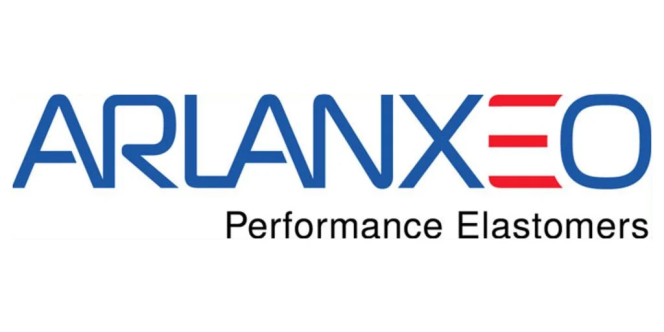
German synthetic rubber maker ARLANXEO has launched consultations with worker representatives over the potential closure of its Port Jerome facility in France, citing persistent weak demand and declining competitiveness in the European chemicals industry.
The company, which is majority-owned by Saudi Aramco, had begun an information and consultation period with the Works Council at the site, located in northern France. A final decision on the closure will be taken after the mandatory consultation process concludes and approval is obtained from the French labour authorities, DREETS.
“The European chemical industry continues to face persistent weak demand and declining competitiveness driven by rising costs, unbalanced global markets, and increased regulatory pressure,” said Stephan van Santbrink, ARLANXEO chief executive.
“These conditions have generated a significant burden on the sector across the regional value chain. ARLANXEO has not been an exception to these challenges. The Port Jerome site has remained in a structurally loss-making position. Despite numerous improvement efforts, we do not foresee a viable path to a sustained structural improvement.”
The company did not disclose how many jobs would be affected by a potential closure, nor did it provide details on the facility’s production capacity or annual output.
Van Santbrink acknowledged the impact on workers, saying: “We recognise the impact a potential closure may have on our employees, and we regret the need to consider these steps. We will continue to treat all employees with respect. If we decide to cease operations at the site, we will do our utmost to assist in finding alternative solutions for all impacted employees. In addition, we intend to provide impacted employees with a social plan which reflects their valued contribution to ARLANXEO.”
The announcement adds to a growing list of European chemical producers struggling with high energy costs, sluggish demand and competition from lower-cost producers in Asia and the United States.
ARLANXEO said it would work closely with all affected internal and external stakeholders to minimise the impact of the intended closure.
Continental Appoints Managers For Global Purchasing And Original Equipment Business
- By TT News
- October 07, 2025
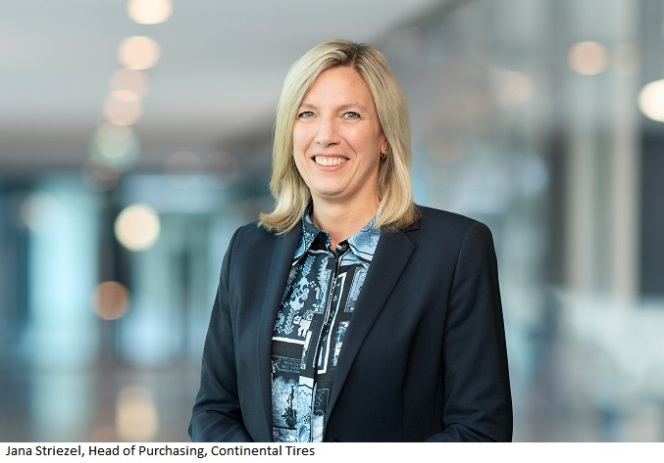
Continental's Tires group sector has strengthened its leadership team with two key internal appointments, effective 1 September 2025. Jana Striezel has been named the new head of global purchasing for Continental Tires, while Dennis Bellmund has assumed leadership of the global original equipment business for both passenger and commercial vehicles. Both executives will report directly to Christian Kötz, the member of Continental AG's Executive Board who leads the Tires group sector.
In her new capacity, Striezel will oversee worldwide strategic and operational purchasing. She brings extensive experience from the automotive industry, having previously held several procurement management roles at Renault, where she led purchasing for the Renault brand and its alliance with Nissan and Mitsubishi in Europe. Her career began at Volkswagen in 2014.
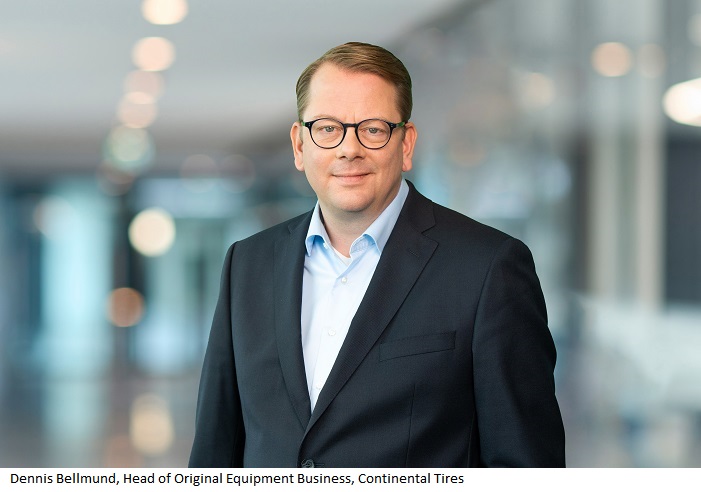
Bellmund, who has a 25-year tenure with Continental, steps into his role following the departure of his predecessor, Manja Greimeier, to the ContiTech sector. His extensive background within the company includes recent responsibility for Continental’s tyre retail operations, alongside prior leadership roles in EMEA supply chain management and sales direction for the European replacement tyre business. These appointments signal a strategic reinforcement of Continental's tyre division leadership.
Kötz said, “We’re delighted to welcome Jana Striezel, a highly skilled manager, to our team. She brings extensive expertise in international procurement and will focus on driving forward our purchasing strategy. In Dennis Bellmund, our global original equipment business has gained a highly experienced leader. Thanks to his many years at Continental, he is familiar with our company and our customers’ needs from many different angles. On behalf of the entire management team, I wish both of them every success in their new roles and look forward to working together.”
“On behalf of the entire team, I would like to thank Manja Greimeier for her successful leadership of our original equipment business and wish her all the best and continued success,” added Kötz.


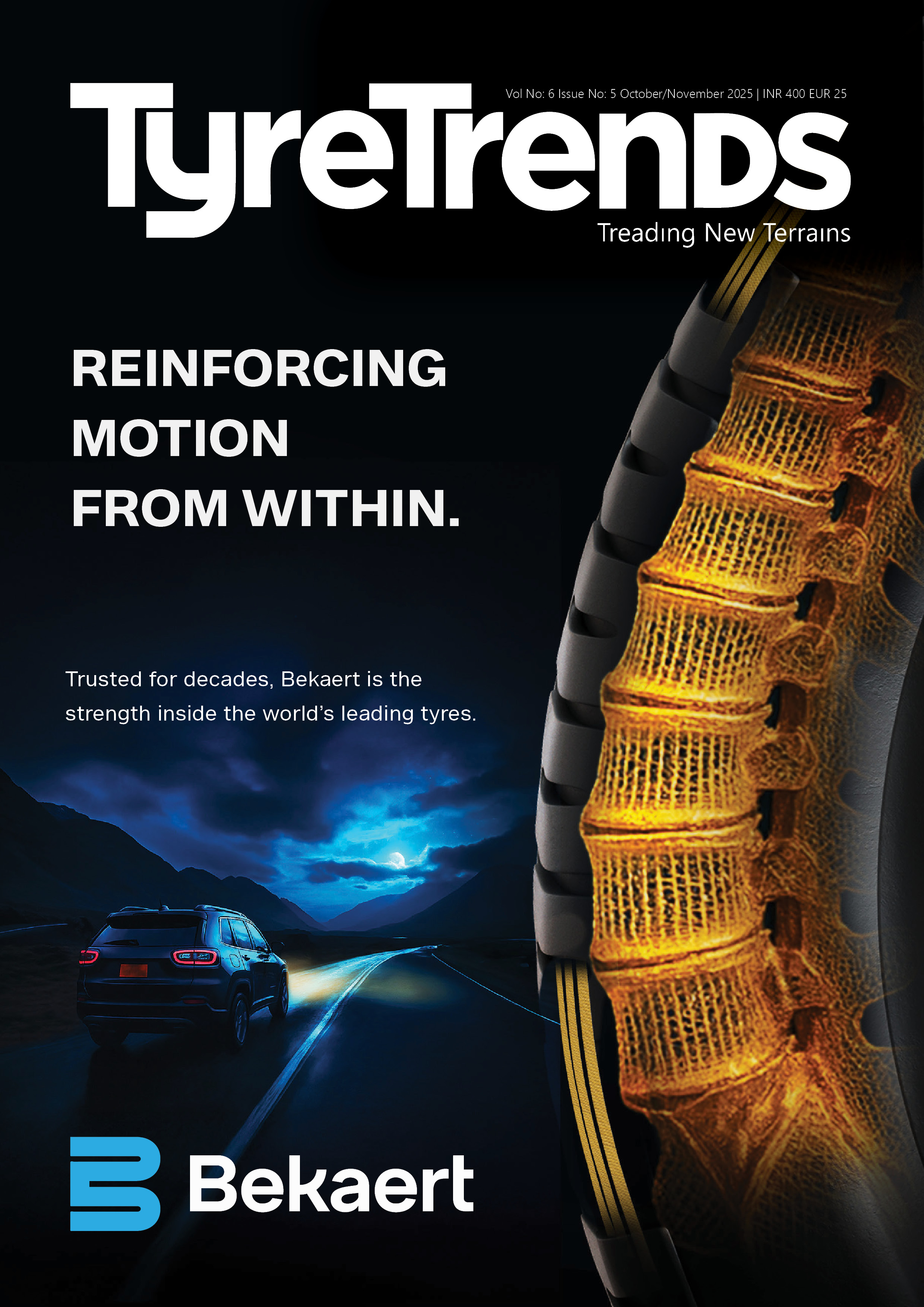



Comments (0)
ADD COMMENT